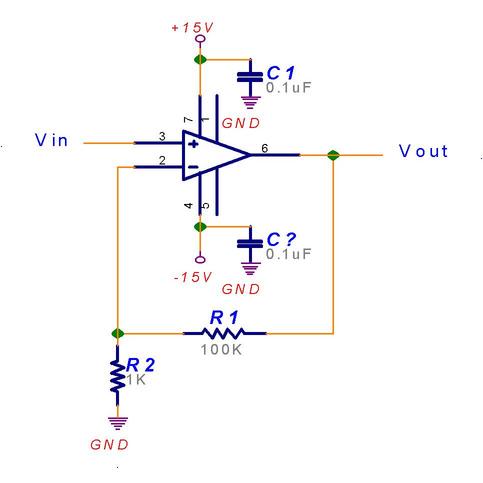 ECG 497/498
ECG 497/498
Homework #2
Due Fri, Sept. 24
Print this page and write in your answers (showing some work)
Here are two links to datasheets for BJT op-amps:
LM741 - the older one
OP27 - the newer one
Answer the following questions for both op-amps if used in the circuit shown to the right (an Non-Inverting amplifier with a gain of 100).
1) What would the maximum output voltage be with Vin=0V (hint: look at the offset voltage)? Note: this causes problem for DC coupled systems with high gain.
a) LM741
b) OP27
2) If the power supply has 100mV of ripple how much ripple would show up on the output (hint: look at the PSRR)? Note: noisy power supplies can cause problems on system with high gains (like microphone amplifiers). Also note, the PSRR is for low frequencies (i.e. 60Hz, 120Hz). At higher frequencies, like say around 100KHz where many switching supplies operate, the PSRR is much, much lower. That's why you don't want to use a switching supply for low noise circuits.
a) LM741
b) OP27
3) How much would you expect the output voltage to change if the op-amp increased in temperature from 25C to 50C (hint: look at the input offset drift)? Note: this is important when parts operate over a wide temperature range or when ICs get hot due to internal power dissipation.
a) LM741
b) OP27
Rhetorical question: Why would you use a LM741 instead of an OP27? Answer: price. If you check the price at www.digikey.com you'll see the LM741 starts around 50 cents and the OP27 starts around $2.50. Both are available in various package styles and grades (i.e. better offset, drift characteristics, and extended temperature range). Usually the better the grade the more expensive the part.
 ECG 497/498
ECG 497/498